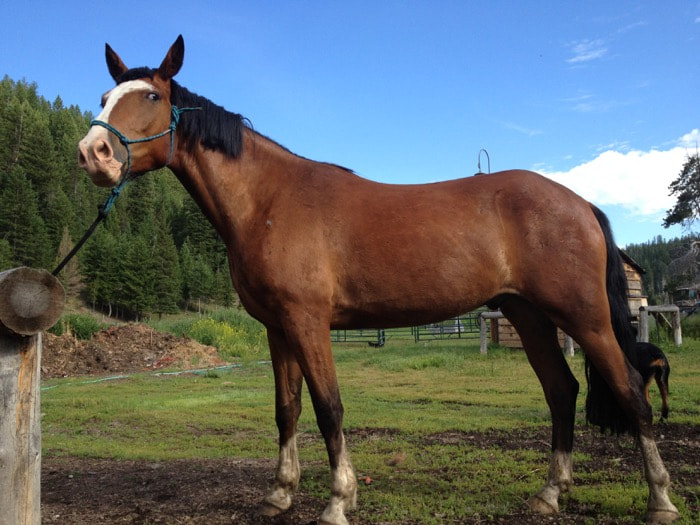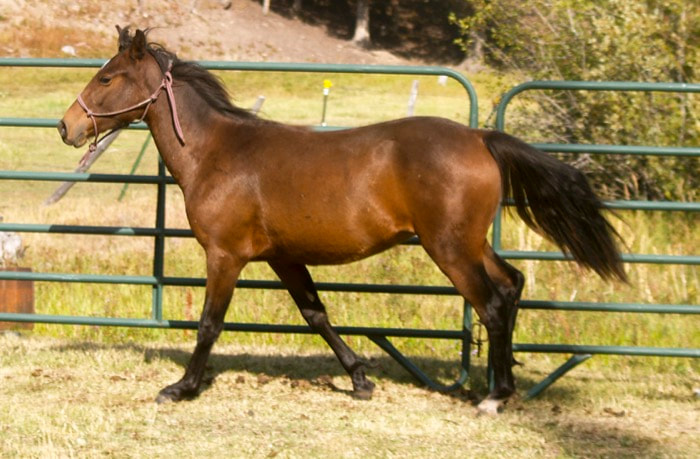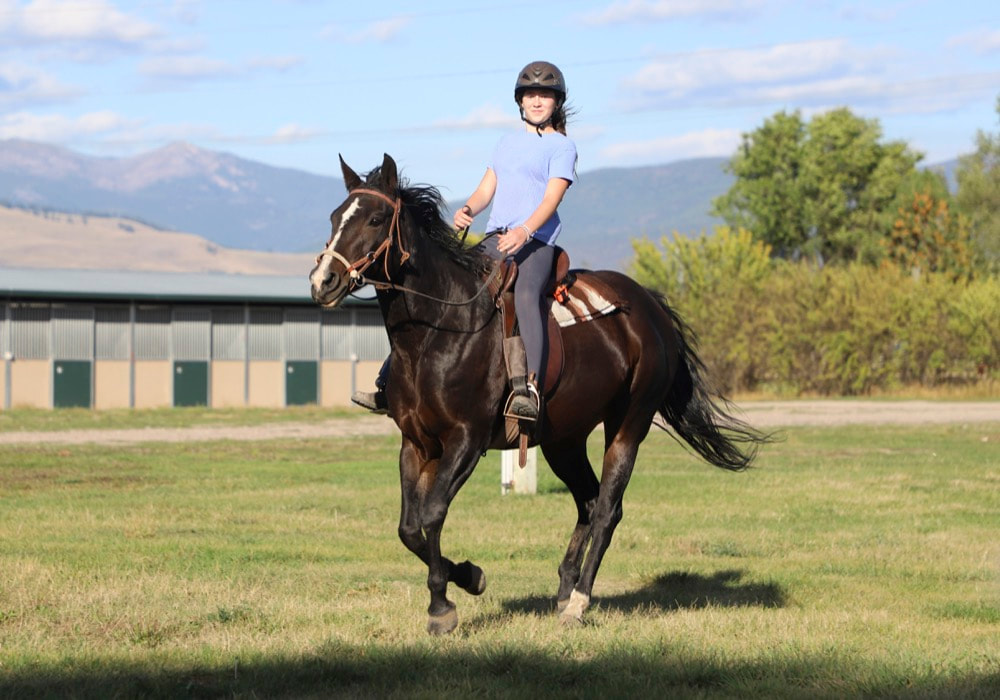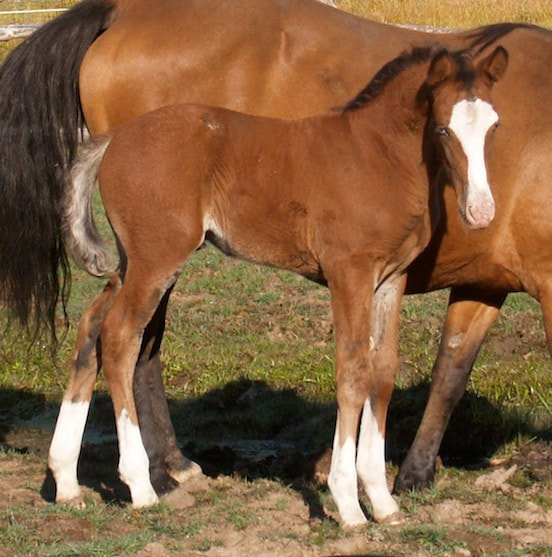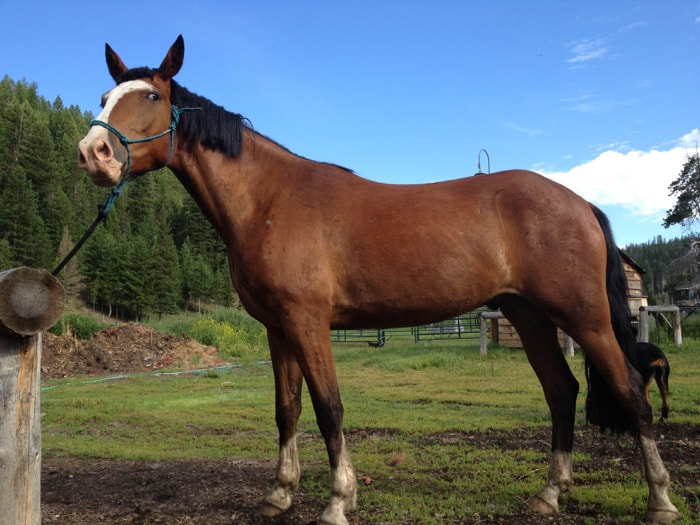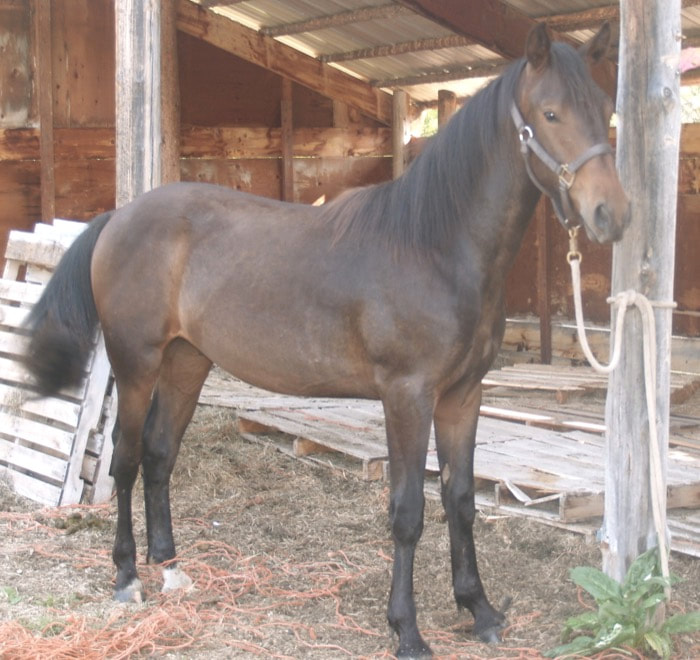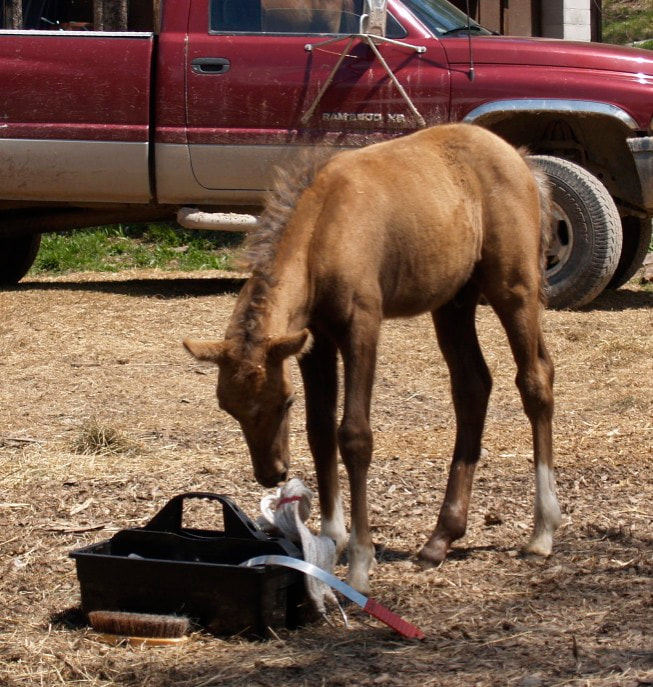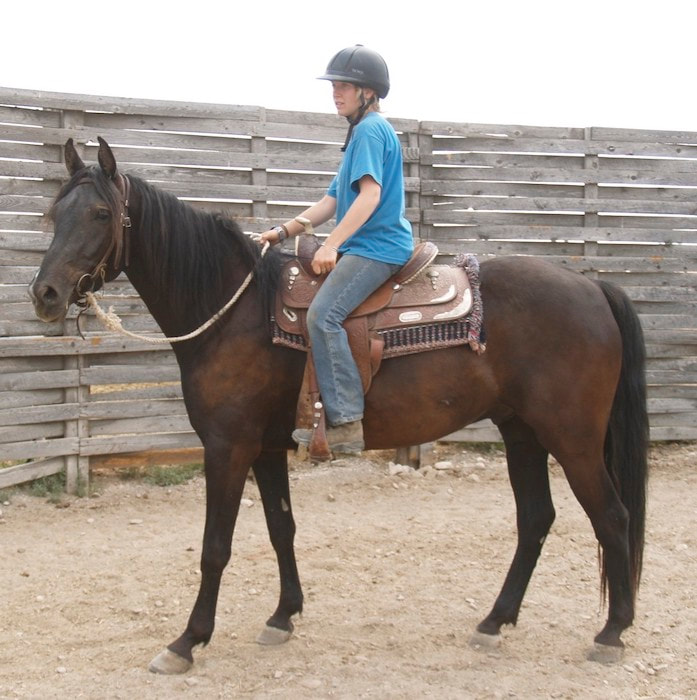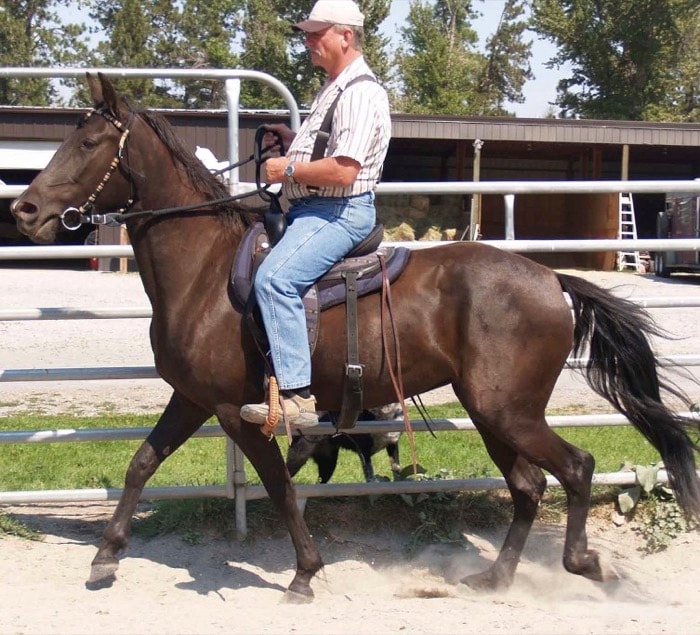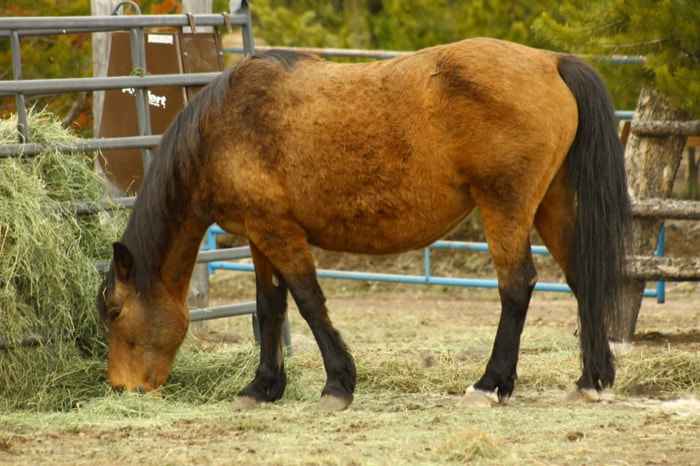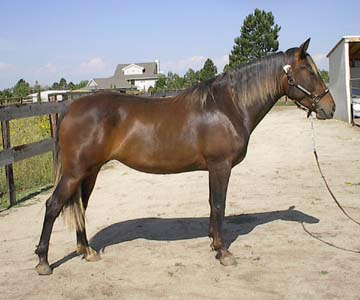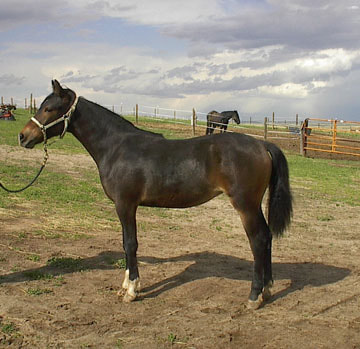horse Colors: BAY
|
Genetics: A bay horse must have a dominant E gene. Thus it could either be: (EE) or (Ee) . The A gene (responsible for lightening the horse to bay instead of leaving it a solid black) must also have at least one dominant A gene, and thus could be either (AA) or(Aa). Thus, the genetic options are...
|
Description: Bay horses have a brown or red body color with black mane, tail and (usually) legs. The black on the legs often bleeds into the brown body color as it reaches higher up on the legs.
Foal Colors
Though many horse colors are significantly different at birth from their appearance as adults, Bay horses are generally born looking pretty similar to how they will look as adults. Their body color will be anywhere from red to dark brown and their mane, tail and legs will be black.
Though many horse colors are significantly different at birth from their appearance as adults, Bay horses are generally born looking pretty similar to how they will look as adults. Their body color will be anywhere from red to dark brown and their mane, tail and legs will be black.
Other Color Genes Mixed With bay
|
Paint - If a paint horse's base color is bay, then the paint will be a tricolored paint with a body color anywhere from red to almost black, a black mane and tail and legs, all interrupted by random, large splotches of white.
|
|
Roan - If a roan horse's base color is bay, it will be what is known as a bay roan, having all the normal coloring of a bay horse with interspersed white hairs all over the body, legs, mane and tail.
|
Other Colors Easily Mistaken for Bay
There are a other colors which are sometimes be mistaken for bay.
There are a other colors which are sometimes be mistaken for bay.
|
Chestnut - The bay coloring can sometimes produce a red body, but a bay horse's main and tail are always black, whereas a red horse's main and tail are either red or white, so these is easily distinguished from each other. Additionally, some bay horses can be mistaken for chestnut at birth. Many bay horses are born with lighter mane and tail, thus making them look more like chestnuts at birth. (see bellow)
|
|
Black - Many black horses look bay when young or exposed to excessive sunlight. Some even retain enough brown in their coats to look bay until they reach 4-5 years old.
|
|
Buckskin - A particularly dark buckskin may easily be mistaken for a bay. The buckskin gene lightens the body color of a bay horse, usually making it closer to tan or gold. But occasionally the lightning effect will be slight enough that it is hardly noticeable.
|
|
Black Buckskin - A black buckskin horse is almost always mistaken for either a bay (brown) or black horse. In this case, the buckskin gene routinely fails to lighten the body color enough to distinguish the horse from a non-lightened horse. Often the only way someone finds out that their horse is black buckskin instead of bay or black, is when it unexpectedly produces a palomino or obviously buckskin foal.
|
|
Dun - A particularly dark dun may be easily mistaken for a bay. In this case, the dark dorsal stripe may be hidden by blending into the darker body color, and the primitive markings on face and legs may only be noticeable when the horse is in summer coat and in bright sunlight.
|
|
Red Chocolate - Some red chocolates horses may be mistaken for bay at certain times in their lives. Many of them have enough black in their mains and tails that they appear to be a bay horse. (The Red Chocolate horse is, by the way, actually derived from a bay base color, not a red one. The Chocolate gene (also known as the Silver Dapple gene) alters the horse's coloring much less than a normal chocolate horse whose base color is either Red or Black and who has the distinctive brown body with the flaxen main and tail.) |
|
Other - There are a lot of colors which could be bay or may be something else and are hard to tell for certain without a genetic test.
|
YOUR MARE: Is your mare bay?

